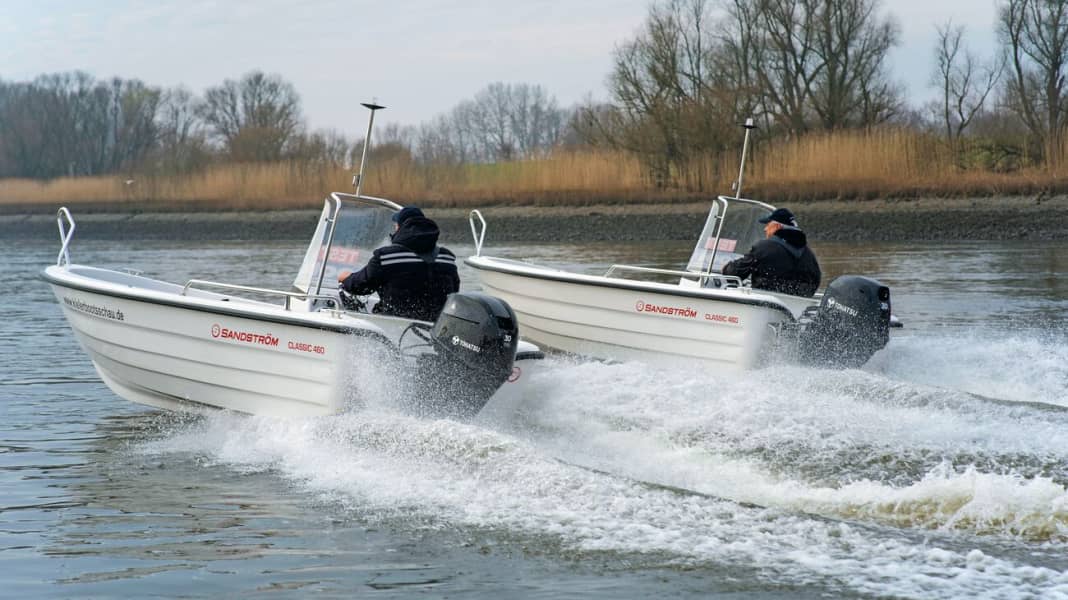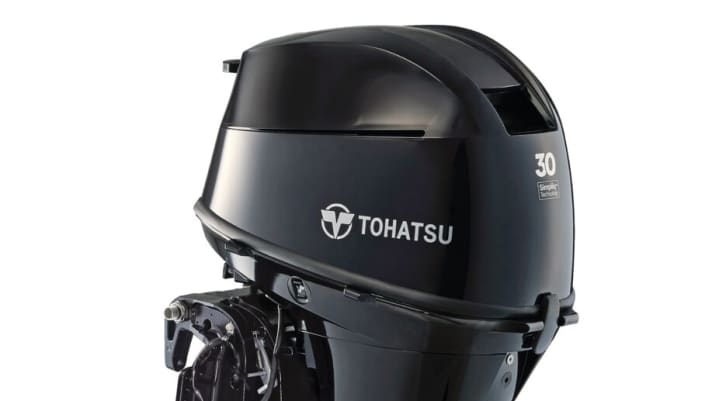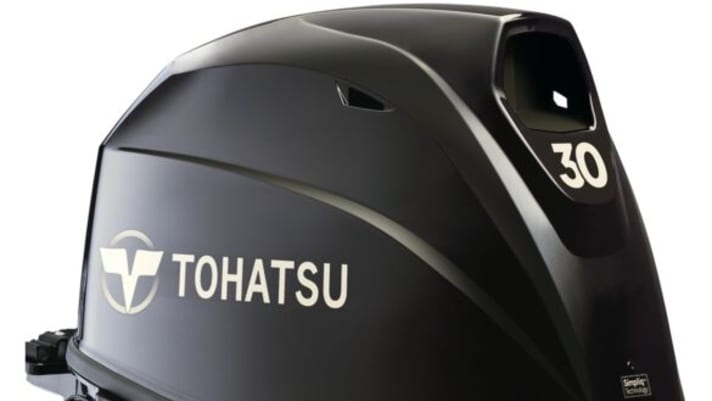
At the beginning of the year, Robert Marx, Managing Director of Friedrich Marx GmbH & Co. KG, offered to compare an old outboard motor with its newly designed and manufactured brother. We didn't hesitate for long and quickly said yes, because comparisons are always an exciting story, especially when it comes to outboards. Anyone who knows the Marx company probably also knows that it has been the Tohatsu distributor in Germany for a few years now. It is therefore no surprise that our comparison test involves Tohatsu engines, more specifically the new MFS 30D and the older MFS 30C.
The biggest external difference between the two engines can be found in the shape of the bonnet: the new model has been given Tohatsu's so-called softer design language. Under the bonnet is the latest technology, which makes the engine fit for future emission standards and therefore future-proof. Another important point is that the new engine can be operated easily and without loss of power with the e-fuels known today.

The engine NEW
- Manufacturer: Tohatsu
- Type: MFS 30D
- Cylinder: 3
- Bore and stroke: 61 x 57 mm
- Displacement: 500 ccm
- Power: 22.1 kW (30 hp)
- Full load speed range: 5,500-6,500 rpm
- Fuel: Unleaded petrol
- Fuel system: electronic injection
- Weight: 57 kg
- Gear ratio: 2.17 : 1
- Test propeller: 12"
- Manufacturer's warranty: 5 years
- Price: € 5,999
- Distribution and dealer verification : www.marx-technik.de
The most important differences in the technical data are less displacement in the new engine and, above all, its almost 20 per cent lower weight. At 57 kg, the new engine is the lightest three-cylinder in its class, according to the manufacturer. This is essentially achieved with a 40 percent lighter crankshaft and a plastic intake manifold that weighs only about half as much as the older model's manifold (made of die-cast aluminium). Less weight naturally has advantages when it comes to transport and handling - such as towing the engine over the beach and then attaching it to an inflatable boat. It is suitable for a wide range of smaller boats with and without a control stand. This ranges from inflatable boats to aluminium boats and GRP boats.
Robert Marx had obtained two identical Sandström Classic 460s from the boat dealer Kieler Bootsschau as a "test rig" for our test. Both boats had exactly the same equipment and therefore also the same weight. We drove the boats with two people and the test area was the Elbe, which of course made it necessary to measure the speed in both directions. Both models reach roughly the same speeds, and of course they should, as the gear ratio and propeller are identical. In terms of top speed, we achieved slightly more speed with the new model. The noise levels show a similar picture, and here too the differences are very small. Of particular interest to us boaters is the fuel consumption: apart from at 1,000 rpm, the differences between the old and new engines were minimal. In the upper engine speeds from 5,000 rpm, the consumption was slightly lower. At speeds between 2,000 rpm and 4,500 rpm, the older engine was even slightly more economical. The economical speed range for our test duo is between 5,000 and 5,500 rpm. The acceleration is still missing: Here we measured with the current and accelerated up to 35 km/h without using the power trim. Most people have probably already guessed that there was no real winner here either. Both boats were a good eleven seconds faster. It would not be objective to emphasise a difference of a tenth here.

The ALT engine
- Manufacturer: Tohatsu
- Type: MFS 30C
- Cylinder: 3
- Bore and stroke: 61 x 60 mm
- Displacement: 526 ccm
- Power: 22.1 kW (30 hp)
- Full load speed range: 5,500-6,250 rpm
- Fuel: Unleaded petrol
- Fuel system: electronic injection
- Weight: 71.5 kg
- Gear ratio: 2.17 : 1
- Test propeller: 12"
- Manufacturer's warranty: 5 years
- Price: € 5,499
- Distribution and dealer verification : www.marx-technik.de
The best for last: the price. Buyers will have to pay 500 euros more for the new engine technology. It will be available from the end of 2022, when a less powerful version of the same design with 25 hp will also be offered.
Conclusion
Apart from the 1,000 rpm range, the old MFS 30C still delivers top performance compared to its younger brother. The new engine impresses with its pioneering technology and low weight, which makes it ideal for use on light boats. The weight saving is also an advantage when handling the engine.
Need more information? You can find the outboard motor test with more pictures and detailed measurement results in BOOTE issue 06/2022 - available from newsagents from 18 May 2022 or online directly in the Delius Klasing Shop.

